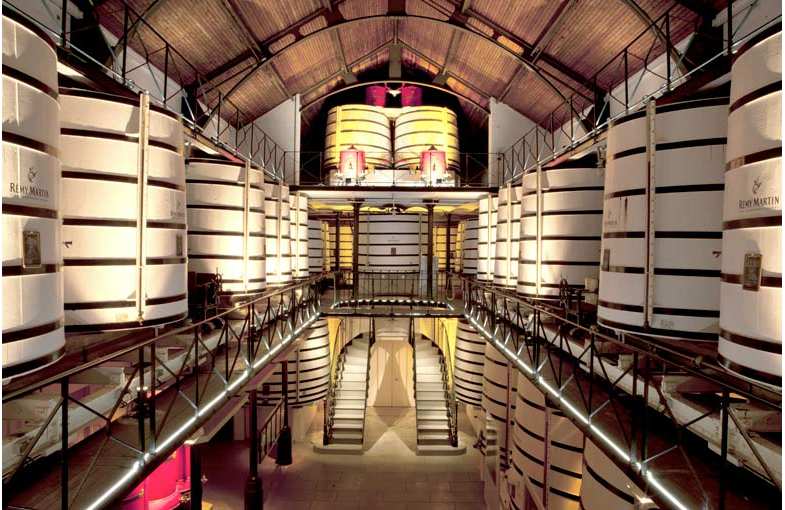
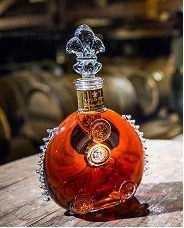
In the world of fine wine and spirits the sophisticated flavors of cognac and wine stand as two quintessential choices, each with its unique allure. While they may share a common foundation in fermented grapes, their production methods, flavor profiles, and ideal pairings diverge dramatically, offering connoisseurs a rich tapestry of tastes to explore. Cognac, with its bold, smooth complexity, is often reserved for moments of indulgence, whereas wine, ranging from crisp whites to robust reds, can easily accompany any occasion. As we attempt to discover the subtle yet substantial differences between cognac and wine, we’ll dive into their distinct characteristics, the art of pairing them with food, and how to elevate your tasting experience. Whether you’re a seasoned enthusiast or a curious newcomer, understanding these differences will enhance your appreciation for both beverages, guiding you toward the perfect pairing that will delight your palate. Better yet explore the region in person with our Private Cognac wine tours.
Cognac and wine, though both originating from grapes, embark on distinct journeys from vineyard to glass. Their differences start at the very root—the type of grapes used. For cognac, the primary grape is Ugni Blanc, known for its high acidity and low alcohol content, which are ideal for distillation. Wine, on the other hand, boasts a diverse range of grape varieties, each imparting unique flavors and characteristics to the final product. The terroir, or the environment where the grapes are grown, also plays a significant role, influencing the taste profiles of both cognac and wine.
The production processes for cognac and wine diverge significantly after the grape harvest. Cognac undergoes a meticulous double-distillation process in copper pot stills, known as Charentais stills, followed by aging in oak barrels for at least two years. This process imparts complex flavors and aromas, transforming the spirit into the rich, amber liquid we recognize as cognac. Wine production, conversely, involves crushing the grapes to release their juice, which is then fermented, either with or without the grape skins, to produce the desired wine style. The aging process for wine varies greatly, depending on the type of wine and the winemaker's preferences.
Flavor profiles are another area where cognac and wine part ways. Cognac is renowned for its depth and complexity, with notes ranging from fruity and floral to spicy and nutty, often accompanied by a smooth, velvety texture. Wine, however, offers a vast spectrum of flavors, from the crisp acidity of a Sauvignon Blanc to the bold, tannic structure of a Cabernet Sauvignon. This variety allows wine to pair seamlessly with a wide range of foods, enhancing the dining experience. Cognac, though versatile, is often enjoyed on its own or with select food pairings that complement its rich, layered profile.
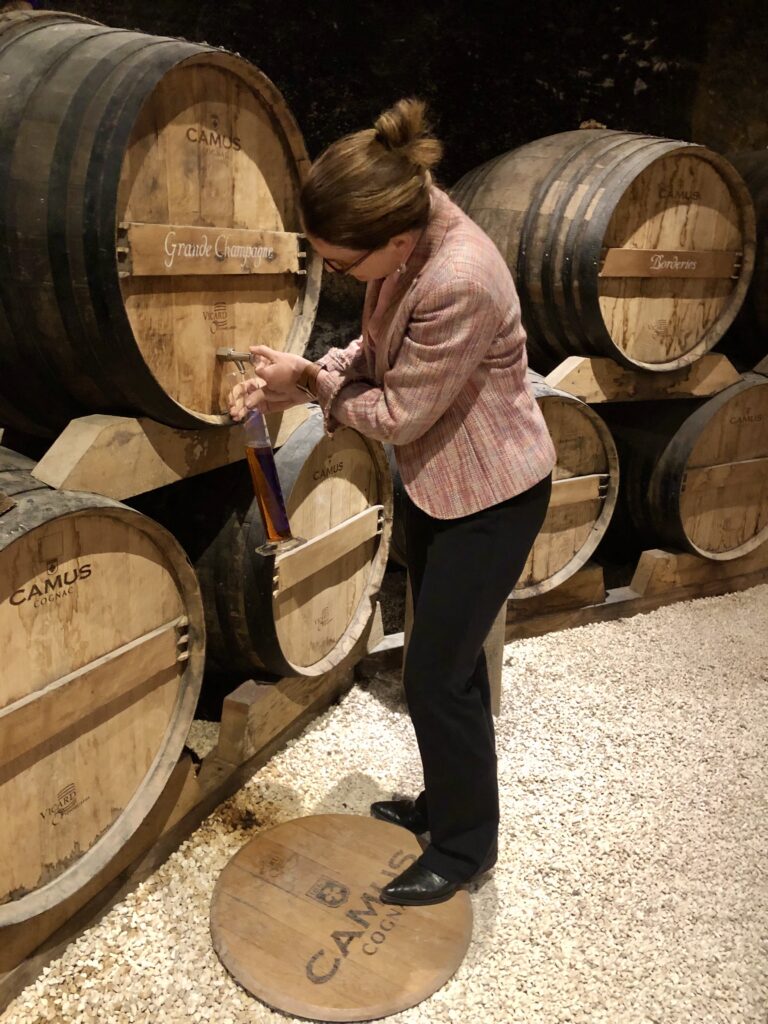
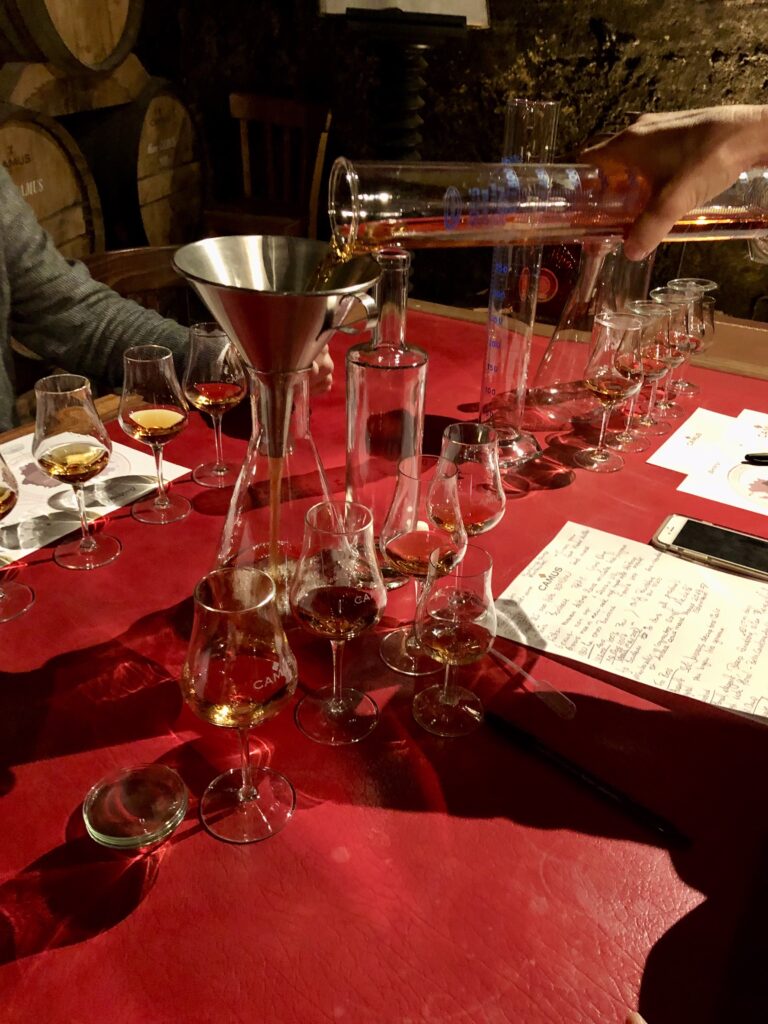
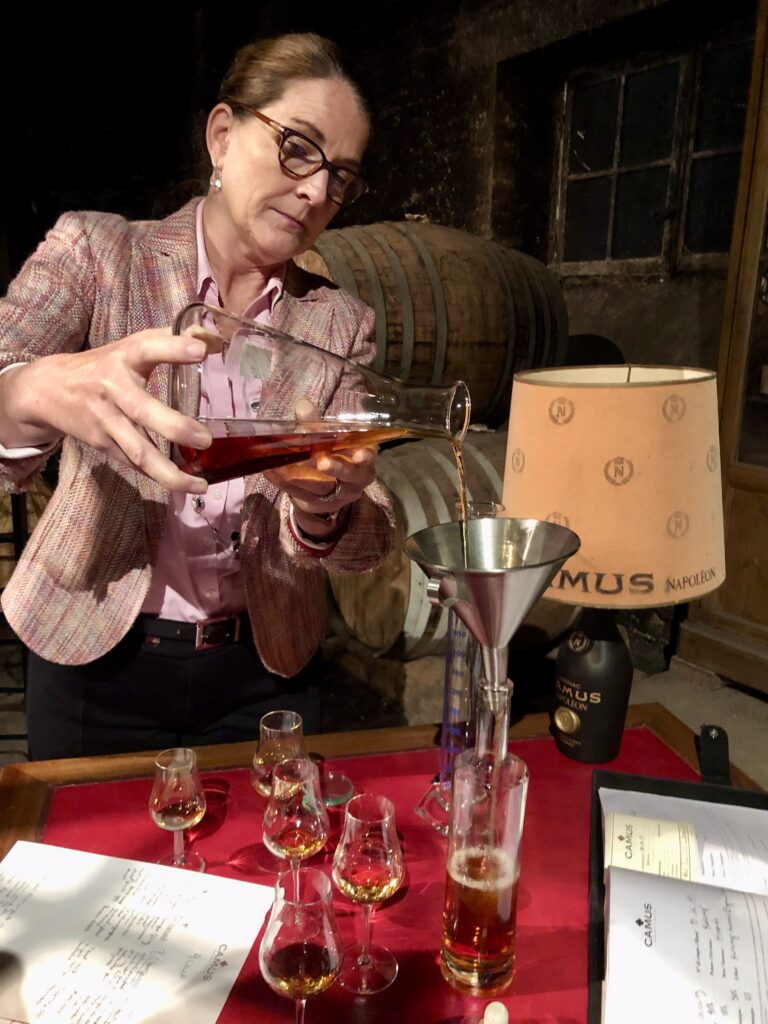
The production of cognac is a labor-intensive, artisanal process that begins in the vineyards of the Cognac region in France. The primary grape used for cognac is Ugni Blanc, prized for its high acidity, which is essential for the distillation process. These grapes are harvested, pressed, and fermented into a low-alcohol wine, typically around 7-9% ABV (alcohol by volume). This wine serves as the base for the distillation process, which is where the transformation into cognac truly begins.
Distillation is the heart of cognac production and is conducted in traditional copper pot stills known as Charentais stills. This process involves two distinct distillations. The first distillation, or "première chauffe," produces a liquid called "brouillis," which is then distilled a second time in the "bonne chauffe." This second distillation yields the "eau-de-vie," or "water of life," with an alcohol content of about 70%. This clear, potent liquid is then ready for aging.
Aging is a crucial step that imparts cognac with its rich flavors and amber color. The eau-de-vie is aged in French oak barrels, which contribute to the spirit's complexity. The aging process must last at least two years, but many cognacs age for much longer, with some of the finest cognacs maturing for decades. During this time, the liquid interacts with the wood, developing notes of vanilla, spice, and dried fruit, all while losing some alcohol content and gaining a smoother texture. The final step involves blending different aged eaux-de-vie to achieve the desired flavor profile, a task that requires a master blender's expertise. See each of these steps or experience it yourself on our Cognac Tasting tour.
Wine production is a diverse and intricate process, with each step influencing the final product's flavor and style. The journey begins in the vineyard, where the choice of grape variety, soil composition, climate, and vineyard management practices all play pivotal roles. Grapes used for winemaking come in a wide array of varieties, each bringing its unique characteristics to the wine. For instance, Chardonnay grapes produce wines with rich, buttery textures, while Pinot Noir grapes yield lighter, more delicate wines.
Once the grapes are harvested—either by hand or machine—they are sorted, crushed, and pressed to extract the juice. For white wine, the juice is quickly separated from the grape skins to maintain a lighter color and flavor. For red wine, the juice is fermented with the skins, which imparts color, tannins, and additional flavors. Fermentation is a critical stage where yeast converts the sugars in the grape juice into alcohol, producing the primary wine. Temperature control during fermentation is essential, as it influences the wine's flavor development.
After fermentation, the wine may undergo various processes such as malolactic fermentation, which softens the acidity, or aging in oak barrels, which can add complexity and depth. The wines are then clarified, filtered, and bottled. The aging potential of wine varies; some wines are best enjoyed young, while others benefit from extended aging, developing more nuanced flavors over time. This diversity in production techniques and grape varieties results in the broad spectrum of wine styles, from light and crisp whites to bold and tannic reds, each offering unique tasting experiences.
Cognac and wine hold a revered place in French culture, symbolizing the country's rich heritage and artisanal craftsmanship. France is renowned worldwide for its wine regions, such as Bordeaux, Burgundy, and Champagne, each producing wines with distinct characteristics and immense prestige. Wine is deeply intertwined with French cuisine, often considered an essential component of a meal. The practice of pairing wine with food is a cherished tradition, enhancing the flavors of both the wine and the dish, and reflecting the French philosophy of savoring every culinary experience.
Cognac, produced exclusively in the Cognac region, is another jewel in France's crown of fine beverages. The meticulous production process and long aging periods required to create high-quality cognac exemplify the dedication to excellence that French artisans are known for. Cognac's association with luxury and sophistication has made it a symbol of French elegance, often enjoyed in settings that celebrate refinement and indulgence. Its cultural significance is also evident in literature and art, where cognac frequently appears as a motif of opulence and tradition.
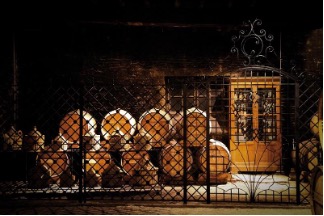

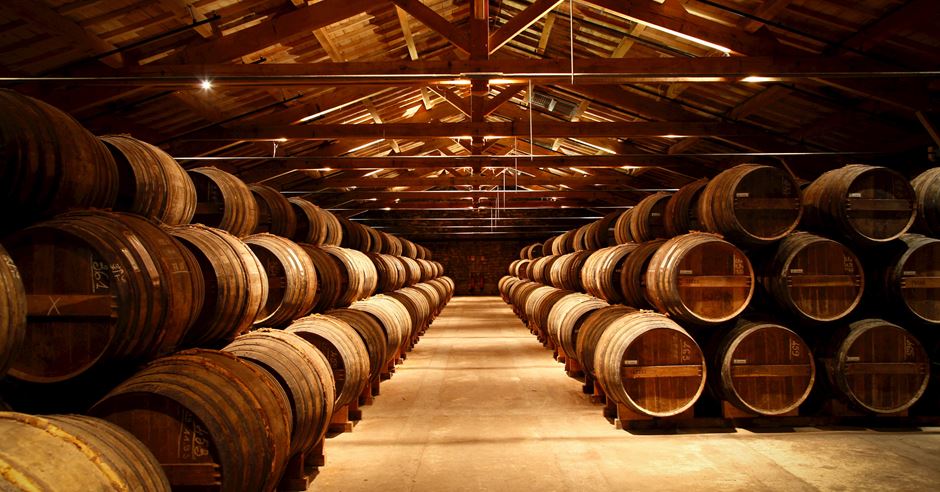
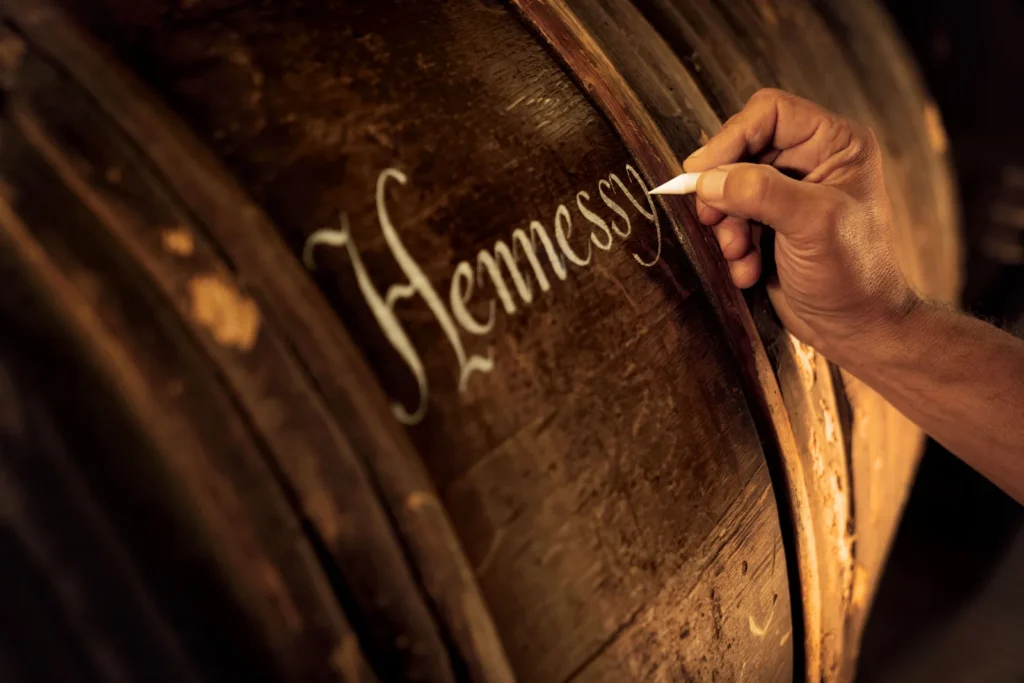
France's reputation for exceptional spirits and wines stems from its diverse regional terroirs. When it comes to Cognac, the production is concentrated in a specific region in south western France, while wine production spans several distinctive areas across the country.
The Cognac region, situated just north of Bordeaux along the Charente River, is divided into six crus: Grande Champagne, Petite Champagne, Borderies, Fins Bois, Bons Bois, and Bois Ordinaires. Grande Champagne produces the most prestigious Cognacs, known for their exceptional aging potential and refined floral aromas.
For wine, Bordeaux stands as France's largest quality wine region, renowned for its exceptional red blends featuring Cabernet Sauvignon and Merlot. Burgundy, with its limestone-rich soils, produces some of the world's most coveted Pinot Noir and Chardonnay wines. Champagne, in northeastern France, creates the world's most celebrated sparkling wines through its unique méthode champenoise.
Other significant wine regions include the Rhône Valley, known for Syrah-based reds and Viognier whites; Loire Valley, celebrated for its diverse styles from Sancerre to Vouvray; and Alsace, producing distinctive aromatic white wines influenced by German traditions.
These regions' distinct terroirs, (climates, soils, and centuries-old traditions) continue to shape France's unparalleled reputation in the global beverage industry.
It explains how Cognac's rich, complex flavors work well with dishes like foie gras, cheeses, or desserts, while wine offers versatility with meals, pairing perfectly with everything from meats to seafood.
Cognac's rich complexity and nuanced flavor profile make it an exceptional pairing companion for various foods, particularly after dinner as a digestif.
Cheeses: Cognac pairs wonderfully with bold, aged cheeses. Try it with Roquefort, where the spirit's sweet notes balance the cheese's salty intensity. Aged Comté and Mimolette, with their nutty characteristics, also create harmonious pairings with VSOP or XO Cognacs.
Chocolate & Desserts: Dark chocolate with 70% or higher cocoa content creates a sublime marriage with Cognac, particularly aged expressions. The spirit's vanilla and caramel notes complement rich desserts like crème brûlée, tarte tatin, or chocolate fondant. For a simpler pairing, try fresh figs or dried apricots with a younger VS Cognac.
Savory Delicacies: Foie gras pairs exceptionally well with Cognac, as the spirit cuts through the richness while complementing its buttery texture. Duck confit or pâté also shine alongside a glass of fine Cognac.
While wine offers tremendous versatility throughout a meal—from light whites with seafood to robust reds with beef—Cognac typically shines most brightly at the end of dining experiences. Wine adapts to the main course, whether it's a crisp Sancerre with oysters or a bold Bordeaux with lamb, while Cognac elevates the conclusion of a memorable meal.
The distinction in pairing approaches highlights the complementary relationship between these two French treasures—wine accompanies the journey, while Cognac provides the perfect finale.
Tasting Cognac and wine side-by-side tasting offers a fascinating exploration of France's finest beverages, highlighting their contrasting production methods, flavor profiles, and sensory experiences.
Consider this approach to tasting or serving wine and cognac:
Start with lighter wines such as Champagne or white Burgundy before progressing to more robust reds like Bordeaux or Rhône Valley selections. This prepares your palate for the intensity of Cognac, which should conclude the tasting sequence.
For Cognac, progressing from VS to VSOP to XO helps to experience the evolution of complexity through aging.
Temperature matters significantly—serve wines at their optimal temperatures (chilled whites, room temperature reds) and Cognac slightly below room temperature in tulip-shaped glasses that concentrate aromas.
When tasting Cognac and wine, training your palate to identify specific flavor components enhances appreciation of their distinct characteristics.
In Cognac, look for a progression of flavor notes that evolve with age:
The tasting technique for Cognac involves examining its color against light, swirling to release aromas, and taking small sips to coat the entire palate.
For wine, flavor profiles vary dramatically by grape variety and region:
When tasting wine, evaluate its color, clarity, aroma intensity, specific flavor notes, body, acidity, tannin (for reds), and finish length.
The contrast between wine's fermented grape expression and Cognac's distilled concentration creates a fascinating study in transformation—wine preserves grape character while Cognac concentrates and transforms it through distillation and barrel aging.
Discover the ultimate French wine and Cognac experience with Decanter Tours' expertly curated journeys through France's most prestigious wine regions.
Our exclusive Bordeaux-Cognac Connection tour offers the perfect introduction to both worlds, beginning in the celebrated vineyards of Bordeaux before venturing to the historic Cognac houses along the Charente River. Led by certified sommeliers and spirits experts, these intimate tours provide unprecedented access to family-owned estates and prestigious houses not typically open to the public.
Experience the complete journey from the vineyard to the bottle as you witness wine fermentation techniques in Bordeaux's grand châteaux, then observe the traditional double-distillation methods in Cognac's copper pot stills. Our expert guides will teach you professional tasting techniques applicable to both beverages, enhancing your appreciation for life.
Accommodations feature boutique luxury hotels in historic properties, while dining experiences showcase regional cuisine perfectly paired with the wines and Cognacs you'll discover throughout your journey.
Whether you're a serious collector or simply passionate about French wine, Decanter Tours offers customizable itineraries that can be tailored to your specific interests—from historic Grande Champagne houses to innovative new producers pushing boundaries in all French wine regions.
Book your immersive tasting journey today and discover why these iconic French wines have captivated connoisseurs for centuries. Limited spaces available for our signature summer tours—reserve your experience now through our website or contact our concierge team for bespoke private tour options.
Contact us to learn more.
Cognac and wine differ fundamentally in their production methods, alcohol content, and flavor profiles. Wine is made through the fermentation of grape juice, resulting in an alcoholic beverage typically ranging from 11-15% ABV. Cognac, however, begins as wine but undergoes double distillation in copper pot stills and extensive oak aging, resulting in a spirit with 40% ABV or higher.
The production regions also differ significantly. While wine is produced worldwide, true Cognac can only come from the designated Cognac region in western France. Additionally, Cognac must be made from specific grape varieties, primarily Ugni Blanc.
In terms of consumption, wine is typically enjoyed with meals and comes in numerous varieties and styles. Cognac is traditionally served as a digestif after dining, with its complex flavor profile categorized by age designations (VS, VSOP, XO) rather than by grape variety.
While Cognac begins its life as wine, it is not classified as a wine but rather as a brandy or spirit. All Cognac starts as a relatively acidic, low-alcohol white wine produced primarily from Ugni Blanc grapes. This wine serves as the base for distillation, where it undergoes a transformative process.
The distillation process concentrates the alcohol and certain flavor compounds from the wine, creating what is called eau-de-vie. This clear spirit then ages in French oak barrels, developing color and complexity over time. Through this production journey, the wine base is fundamentally transformed, removing Cognac from the wine category and placing it firmly in the spirits category.
Therefore, while Cognac shares a grape origin with wine, it belongs to the brandy family of spirits rather than the wine family.
Wine and Cognac serve different roles in the dining experience and pair with foods in complementary ways:
Wine Pairings:
Cognac Pairings:
For the best dining experience, consider serving wine during the meal based on the main course, then transitioning to Cognac after dinner with dessert or cheese. This progression allows both beverages to showcase their strengths without competing with each other.
Absolutely! A side-by-side tasting of Cognac and wine offers an educational and enjoyable experience that highlights the relationship between these two French specialties. When organizing such a tasting, consider these recommendations:
A comparative tasting allows participants to appreciate the fundamental differences in production methods, flavor development, and sensory characteristics while understanding how both beverages represent the pinnacle of French beverage craftsmanship.

Experience the finest private wine tours in Bordeaux and beyond. With over 20 years of expertise, we craft tailor-made wine journeys to iconic regions like Médoc, Saint-Émilion, Burgundy, and Champagne. Explore exclusive chateaux with expert guides and seamless planning for a truly unforgettable experience.